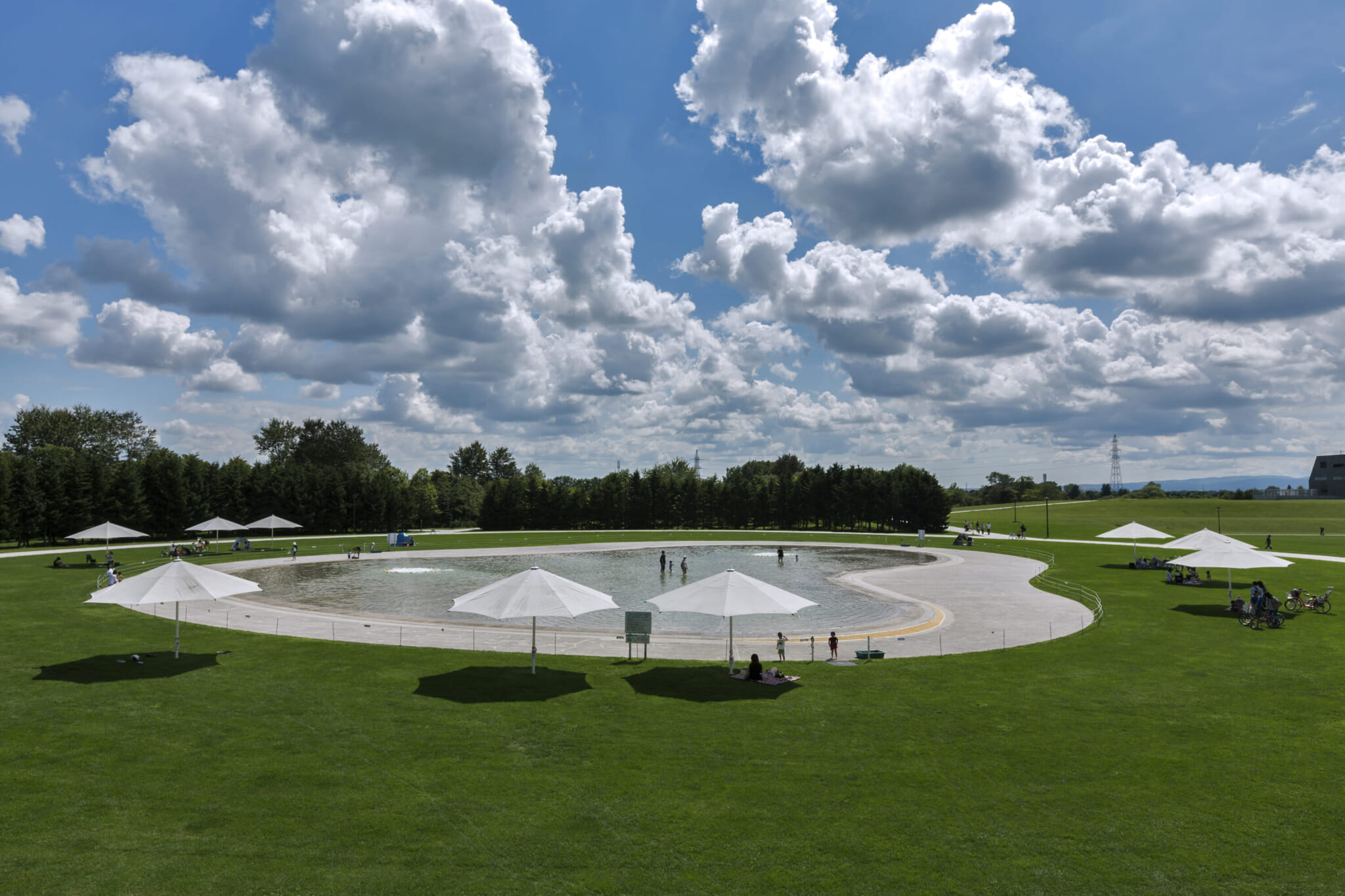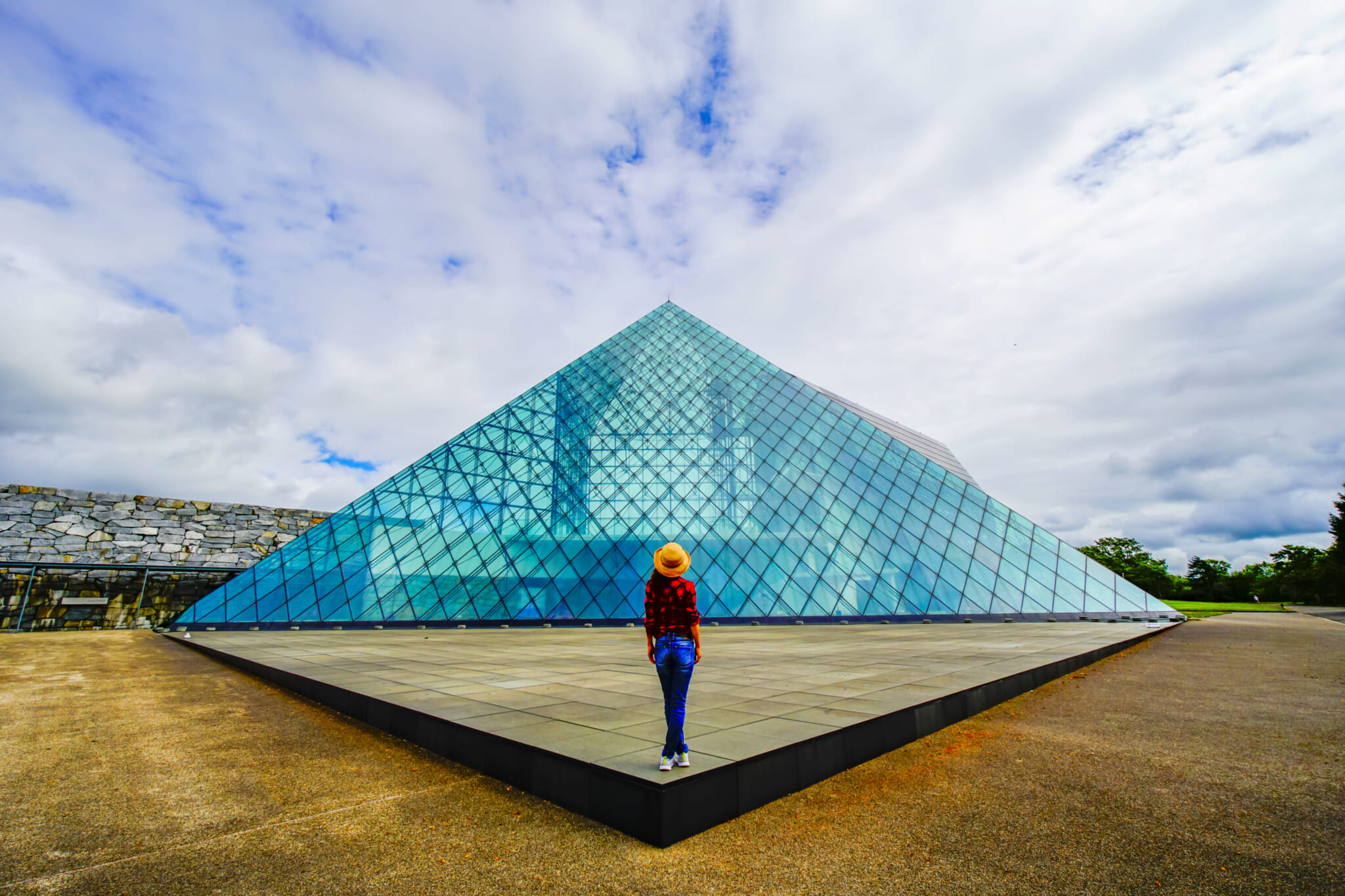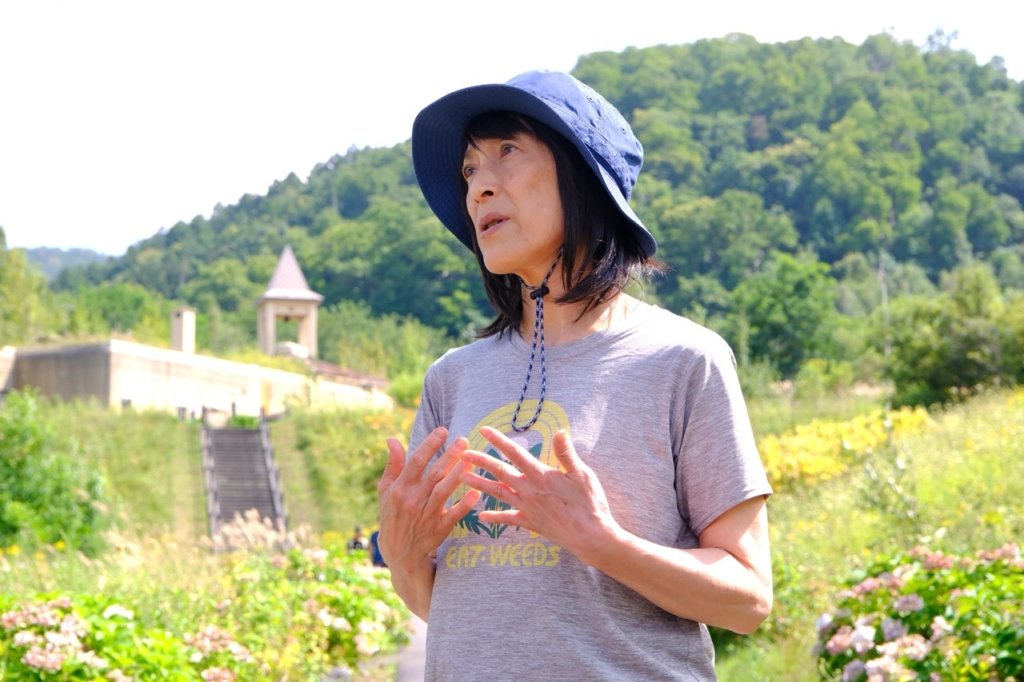This article appears in Tokyo Weekend Vol. 4.
To read the full article, click here.
The garbage dump at Moerenuma Park is huge. Visible from a distance, it towers over Sapporo like an imposing pyramid. But it looks nothing like a garbage dump: the artificial mound is delightfully green, covered in lush grass. It’s located in the heart of Sapporo’s Moerenuma Park, and for me, it perfectly embodies the charm of the park: finding beauty in unexpected places, blending the natural and the artificial in surprising and delightful ways.

The original intention of sculptor Isamu Noguchi to design Moerenuma Park
Moerenuma Park was born from the imagination of the famous Japanese-American sculptor Isamu Noguchi. Wandering through the vast spaces of the park, you’ll find sculptures in the most unexpected places—in the forest, behind pyramids, in toilets. Even the toilets themselves feel like works of art. This is art, in a wide open space where you can experience it without any judgement.
I first visited Moerenuma Park after four years of regular trips to Sapporo. All my local friends took this place for granted; they never mentioned it when I asked them for recommendations or places worth visiting. I discovered Moerenuma when a friend from Tokyo told me about it and was amazed by its understated splendor.
Isamu Noguchi was invited to design the park as part of the city of Sapporo’s efforts to increase the amount of green space in the area while reducing urban sprawl. Noguchi’s collaboration with the city of Sapporo is fitting as his work reflects his deep appreciation for the natural world, often blurring the lines between sculpture and landscape, and spanning disciplines and materials, from trees to concrete. Noguchi is dedicated to encouraging human interaction with nature, creating spaces where visitors can freely explore and interact with their surroundings.
He is not bound by genre and is widely regarded as one of the top sculptors of the 20th century.
Noguchi, who died in 1988 shortly after completing his plan, envisioned Moerenuma Park as a space where art and nature coexisted in perfect harmony. Rather than simply placing his works around, he wanted the entire space to become a work of art.


Garbage Mountain
The expansive geometric design of the 189-hectare Moerenuma Park is immediately apparent as you stroll or cycle through it. In the center of the park sits a large hexagonal mountain known as Mount Moeren.
Made of garbage (non-burnable garbage and construction waste to be exact), Moruyama stands 62 meters tall. The park itself was built on the site of a former garbage disposal plant. In an effort to turn a negative symbol of urbanization into a beautiful one, Noguchi and Sapporo city officials worked together to build a hill where people could play. Now, it has become a landmark where visitors can play, walk their dogs, sleep, and even go sledding in the winter.
Climb down the hill and explore a surreal world. Although Isamu Noguchi was never tied to a specific artistic practice, the works he chose for the park are geometric and sensual. The sculptor’s own philosophy is to view everything as sculpture, and the park embodies this. At first, walking through the park is nothing out of the ordinary, but venture into the woods and you’ll discover a bizarre wonderland.


Another World
The park’s cherry blossom forest, with 1,900 cherry trees, hides a completely different world. When I visited a few years ago, it was at night and deserted, except for crows. They squawked in hoarse, piercing voices, declaring, “This is my land!” As dusk fell and the scattered children’s play facilities stood empty, the woods took on an almost dystopian vibe that felt strangely magical — the ruins of society being repurposed and growing lush and green again.
The play equipment designed by Isamu Noguchi is not your average playground equipment. It twists and turns like Play-Doh squeezed through a square tube, and is colored orange, blue, and red. Add to that the crows hopping around the territory, and it’s a truly absurd sight. Follow the path along the play equipment area and you’ll find Slide Hill, a large cone several meters high with two narrow, curving tracks carved into it. Climb to the top and slide down the path that winds down. It looks intimidatingly high to adults, but it’s easy to see why kids love it.


Moerenuma Park: All-day fun
The park was designed in typical Japanese style, taking the seasons into account. Surprisingly, given Sapporo’s reputation as a winter wonderland, summer is one of the most popular seasons here, attracting a large number of tourists. This is thanks to Moel Beach, a shallow artificial pond surrounded by promenades and corals. Here you can play in the water. Sapporo has a lot of things, but it does lack a shallow place to kick around in the water. Moel Beach is a fun and convenient solution.
In winter, the park is covered in a blanket of pure white snow, perfect for sledding or cross-country skiing; if you prefer indoor activities, you can keep warm inside the Hidamari, a giant glass pyramid that is the symbol of the park and overlooks the white wonderland below.
After strolling through the park, climbing hills, circling mounds, sliding on rides, and even riding rental bikes, you naturally want to learn more about the amazing sculptor who created this paradoxical park, and the pyramid is the perfect place to do so. On the third floor of Hidamari, there is an archive dedicated to Isamu Noguchi documenting his intention to create a fully interactive park that is a sculpture in itself. It is clear that Noguchi’s idea was a joyful, natural space filled with children throughout the day.
Come back 35 years later and you might experience both sides of Moerenuma Park. The daytime is full of laughter and fun, with children running and playing in the snow, sand or grass; the dusk is the dark side, where crows rule the world, cawing and marking their mysterious territory. Both sides are worth marveling at.


 Anal Beads
Anal Beads Anal Vibrators
Anal Vibrators Butt Plugs
Butt Plugs Prostate Massagers
Prostate Massagers
 Alien Dildos
Alien Dildos Realistic Dildos
Realistic Dildos
 Kegel Exercisers & Balls
Kegel Exercisers & Balls Classic Vibrating Eggs
Classic Vibrating Eggs Remote Vibrating Eggs
Remote Vibrating Eggs Vibrating Bullets
Vibrating Bullets
 Bullet Vibrators
Bullet Vibrators Classic Vibrators
Classic Vibrators Clitoral Vibrators
Clitoral Vibrators G-Spot Vibrators
G-Spot Vibrators Massage Wand Vibrators
Massage Wand Vibrators Rabbit Vibrators
Rabbit Vibrators Remote Vibrators
Remote Vibrators
 Pocket Stroker & Pussy Masturbators
Pocket Stroker & Pussy Masturbators Vibrating Masturbators
Vibrating Masturbators
 Cock Rings
Cock Rings Penis Pumps
Penis Pumps
 Wearable Vibrators
Wearable Vibrators Blindfolds, Masks & Gags
Blindfolds, Masks & Gags Bondage Kits
Bondage Kits Bondage Wear & Fetish Clothing
Bondage Wear & Fetish Clothing Restraints & Handcuffs
Restraints & Handcuffs Sex Swings
Sex Swings Ticklers, Paddles & Whips
Ticklers, Paddles & Whips



















